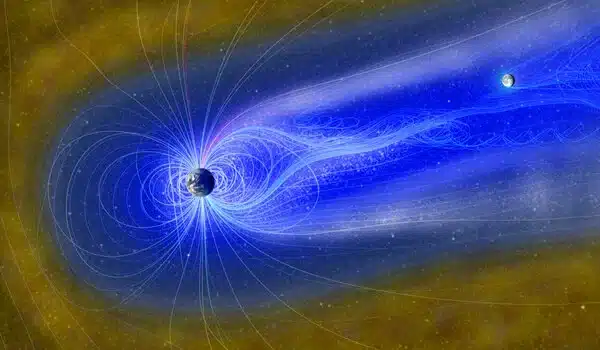Cometary collisions and solar wind are assumed to be the principal sources of lunar water. Cometary impacts can bring water to the Moon in the form of ice, which can subsequently become locked in cold traps at the poles. The creation of water on the Moon can also be aided by solar wind.
High energy electrons in Earth’s plasma sheet have been discovered to contribute to weathering processes on the Moon’s surface, and more critically, the electrons may have contributed in the development of water on the lunar surface.
A team of researchers led by a planetary scientist from the University of Hawai’i at Manoa discovered that high energy electrons in Earth’s plasma sheet are contributing to weathering processes on the Moon’s surface, and that the electrons may have aided in the formation of water on the lunar surface. The findings were published in Nature Astronomy.
Understanding water concentrations and distributions on the Moon is crucial for understanding its genesis and evolution, as well as providing water resources for future human exploration. The new discovery may also help explain the formation of the previously observed water ice in the permanently shadowed regions of the Moon.
This provides a natural laboratory for studying the formation processes of lunar surface water. When the Moon is outside of the magnetotail, the lunar surface is bombarded with solar wind. Inside the magnetotail, there are almost no solar wind protons, and water formation was expected to drop to nearly zero.
Shuai Li
Because of Earth’s magnetism, there is a force field surrounding the planet known as the magnetosphere that shields the world from space weathering and destructive radiation from the Sun. The magnetosphere is pushed and reshaped by the solar wind, leaving a long tail on the night side. The plasma sheet within this magnetotail is an area made up of high-energy electrons and ions that may have come from Earth or the solar wind.
Previously, scientists concentrated on the role of high-energy ions in the weathering of the Moon and other airless worlds in space. The solar wind, which is made up of high-energy particles like protons, bombards the lunar surface and is thought to be one of the primary ways water developed on the Moon.
Shuai Li, an assistant researcher in the UH Manoa School of Ocean and Earth Science and Technology, was interested in investigating the changes in surface weathering as the Moon passes through Earth’s magnetotail, an area that almost completely shields the Moon from solar wind but not the Sun’s light photons, based on his previous work that showed oxygen in Earth’s magnetotail is rusting iron in the Moon’s polar regions.

“This provides a natural laboratory for studying the formation processes of lunar surface water,” said Li. “When the Moon is outside of the magnetotail, the lunar surface is bombarded with solar wind. Inside the magnetotail, there are almost no solar wind protons, and water formation was expected to drop to nearly zero.”
Li and colleagues examined remote sensing data collected by India’s Chandrayaan 1 mission’s Moon Mineralogy Mapper instrument between 2008 and 2009. They looked at how water formation changed as the Moon passed through Earth’s magnetotail, which includes the plasma sheet.
“To my surprise, the remote sensing observations showed that the water formation in Earth’s magnetotail is almost identical to the time when the Moon was outside of the Earth’s magnetotail,” Li said. “This suggests that there may be additional formation processes or new sources of water in the magnetotail that are not directly associated with the implantation of solar wind protons.” High-energy electron radiation, in particular, has similar effects to solar wind protons.”
“Altogether, this finding and my previous findings of rusty lunar poles indicate that the Mother Earth is strongly tied with its Moon in many unrecognized aspects,” he stated. In the future, Li hopes to work on a lunar mission through NASA’s Artemis program to monitor the plasma environment and water content on the lunar polar surface as the Moon moves through the Earth’s magnetotail.
















